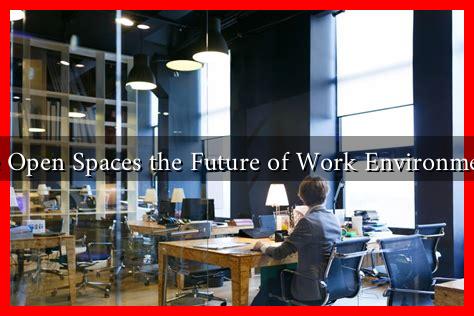-
Table of Contents
Are Open Spaces the Future of Work Environment?
As the world of work continues to evolve, the traditional office setup is being challenged by innovative designs that prioritize collaboration, flexibility, and employee well-being. Open spaces, characterized by their lack of physical barriers and emphasis on communal areas, are becoming increasingly popular. But are they truly the future of work environments? This article explores the benefits, challenges, and real-world examples of open spaces in the workplace.
The Rise of Open Spaces
Open office layouts have gained traction over the past two decades, driven by the belief that they foster collaboration and creativity. According to a study by the International Facility Management Association, 70% of offices in the United States now feature open spaces. This shift reflects a broader trend towards more flexible work environments that cater to the needs of modern employees.
Benefits of Open Spaces
Open spaces offer several advantages that can enhance productivity and employee satisfaction:
- Enhanced Collaboration: Open layouts encourage spontaneous interactions among employees, leading to increased collaboration and idea-sharing.
- Flexibility: These spaces can be easily reconfigured to accommodate different team sizes and project needs, making them adaptable to changing work dynamics.
- Cost-Effectiveness: Open offices can reduce real estate costs by maximizing the use of available space, allowing companies to house more employees in a smaller footprint.
- Improved Communication: With fewer physical barriers, communication flows more freely, which can lead to faster decision-making and problem-solving.
Challenges of Open Spaces
Despite their benefits, open spaces are not without challenges. Some of the most common issues include:
- Noise and Distractions: The lack of privacy can lead to increased noise levels, which may hinder concentration and productivity.
- Reduced Privacy: Employees may feel exposed and uncomfortable without designated personal spaces, which can impact their overall job satisfaction.
- Potential for Conflict: Close proximity to colleagues can lead to interpersonal conflicts, especially if work styles and habits differ significantly.
Case Studies: Success Stories and Lessons Learned
Several companies have successfully implemented open space designs, providing valuable insights into best practices:
- Google: Known for its innovative workspaces, Google’s open office design encourages collaboration while also incorporating quiet zones for focused work. This balance has contributed to high employee satisfaction and productivity.
- WeWork: As a pioneer in co-working spaces, WeWork has demonstrated the appeal of open layouts for freelancers and startups. Their flexible environments foster networking and collaboration among diverse professionals.
- Buffer: The social media management platform Buffer has embraced an open office model that emphasizes transparency and communication. They have also implemented policies to mitigate noise and distractions, such as designated quiet areas.
Statistics Supporting Open Spaces
Research supports the notion that open spaces can positively impact workplace dynamics:
- A study by the Harvard Business Review found that employees in open office environments reported a 15% increase in collaboration.
- According to a report by Gensler, 67% of employees in open offices feel more connected to their colleagues.
- However, it’s important to note that 49% of employees also reported feeling distracted in open office settings, highlighting the need for balance.
The Future of Work: A Hybrid Approach
As organizations navigate the complexities of modern work, a hybrid approach may emerge as the ideal solution. Combining open spaces with designated quiet areas can provide the best of both worlds, allowing for collaboration while also catering to the need for focused work. Companies like Microsoft and Slack are already experimenting with hybrid models that blend remote work with open office designs.
Conclusion
Open spaces represent a significant shift in how we think about work environments. While they offer numerous benefits, including enhanced collaboration and flexibility, they also present challenges that must be addressed. As organizations continue to adapt to the changing landscape of work, a balanced approach that incorporates both open and private spaces may be the key to fostering a productive and satisfying work environment. Ultimately, the future of work will likely be defined by a blend of innovative designs that prioritize employee well-being and organizational goals.
For more insights on workplace design and trends, visit Gensler’s Future of Work report.

